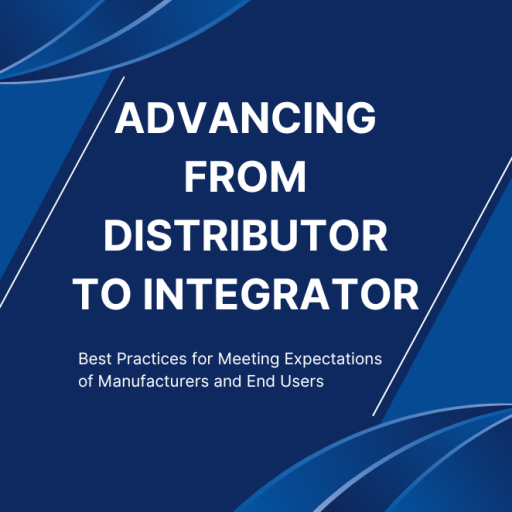Best Practices for Meeting Expectations of Manufacturers and End Users
By Nick Fortuna
Mitch Smith wants material handling equipment distributors to know that with careful planning and execution, they can elevate their status in the eyes of suppliers, advancing from equipment distributors to true systems integrators.
Smith, chief revenue officer for Hytrol Conveyor Co., has seen the relationship between manufacturer and integrator from both sides. He spent 23 years with the systems integrator Bastian Solutions, reaching the level of managing partner and board member, before joining Hytrol as vice president of engineering in 2017.
During that time, Smith says he’s gained a thorough understanding of what manufacturers and suppliers look for in the companies that represent their products. In October, he shared that knowledge with attendees at MHEDA’s Automation Solutions Forum in Cleveland, and he’ll provide a similar roadmap in April at MHEDA’s Annual Convention in San Diego.
For Smith, the difference between distributors and integrators comes down to the breadth of the capabilities they can offer to end users. By growing their companies and broadening their key capabilities, both before and after the sale, distributors can become indispensable partners for manufacturers, he said.
“Systems integrators typically are providing advanced technologies, they’re focused on national and international accounts, and they’re capable of handling multiple large projects at once,” Smith said. “At the end of the day, the key difference is your capabilities.”
In evaluating integrators, Hytrol considers a number of factors, including a company’s corporate values, financial strength, operational reliability, management stability, geographic footprint, product and service offerings and client portfolio, Smith said.
“Sales volume is a big deal,” he said. “Those that are declining are probably ones that we’re not too excited about. Hytrol looks at this like an investment portfolio. We want a diversified portfolio. Every integrator or distributor is not created the same, and that’s OK.”
In addition to growing their businesses, there are important steps distributors can take to become preferred systems integrators. Here are some of Smith’s best practices:
• Discover what end users need. Distributors should conduct thorough market research and analysis to identify opportunities and gaps in the marketplace for turnkey integration services. Once you understand the needs, pain points and preferences of potential customers, you can tailor your operations accordingly.
• Prioritize data. Rather than simply selling material-handling equipment, systems integrators offer consulting, engineering and business services, helping end users to select the best equipment for their individual facilities.
Integrators have a team of data scientists and the ability to perform system or facility design and feasibility studies. Using that data, integrators can provide end users with several options ranging from good, better to best and can help them maximize their return on investment and operational efficiency.
Instead of a two-dimensional representation of a system, integrators will bring their proposals to life using computer simulations, animation and virtual reality.
“Those are the kinds of services that really separate systems integrators from distributors,” Smith said. “The equipment selection, proposal and contract management are huge at this level. End users aren’t expecting a two-page proposal. They’re expecting detail. So you need to have all the data to back up your assumptions and show how you got to your specific plan.
“It’s much more extensive than the distributor sending over two- or three-part numbers and selling volumes of that equipment,” he added.
• Build strategic partnerships. Distributors should build strong relationships with manufacturers, suppliers and service providers to ensure a steady supply chain and access to necessary resources for integration projects.
If a distributor specializes in one technological solution such as conveyors, for example, the company can work with suppliers of goods-to-person technologies such as autonomous mobile robots to expand its expertise.
“Partner with good companies that can help you learn and grow,” Smith said.
• Expand your product and service offerings. Distributors should diversify their portfolios by developing a range of complementary products and services that can be bundled together to provide turnkey solutions for end users.
As distributors expand their skill sets with advanced technologies, they should start with small pilot projects, document the process and analyze their performance. That information and the lessons learned should be stored in a repository and shared throughout the company so the next project goes more smoothly.
In addition to knowledgeable sales professionals, integrators need project managers whose credentials signify that they’re qualified to manage large-scale projects. Project managers should obtain Project Management Professional (PMP) certification through the Project Management Institute to ensure they understand consensus best practices.
An integrator also should establish a project-management process tailored to its individual business so that every project manager within the organization adheres to the same structured methodology.
Integrators need project engineers who can coordinate the implementation of different solutions, including conveyors, goods-to person, pick-to-light and automated storage and retrieval systems, and integrate them with software solutions such as warehouse control systems, warehouse execution systems, warehouse management systems and manufacturing execution systems.
Rather than outsourcing the installation and service of equipment, integrators should aim to beef up their staff and keep those processes in-house.
“As you get bigger, you should move from contracting out most of this work to developing your own internal resources to provide these services because they’re so critical to the long-term support of the customer,” Smith said.
True integrators offer a robust suite of post-sale services to manage accounts for the long term. That typically includes experienced professionals who are available 24/7 to answer customers’ questions, either on the phone or through online chat sessions.
Distributors should be able to offer guidance for clients about managing their spare parts inventory since that may account for 3% to 5% of the total cost of a large-scale project.
Your company should be able to access end users’ systems remotely to diagnose problems. Distributors also should have predictive maintenance programs and automatic error reporting in place to maximize uptime for end users. Distributors that track their performance under service-level agreements with customers can gain insights into end users’ operations and better address their needs.
Service teams should have the highest level of training and certifications, and the distributor should have resources such as parts, equipment and repair vans ready to mobilize. The industry loses a large number of skilled maintenance technicians each year as baby boomers retire, so upskilling younger workers and training them in emerging technologies is a vital, continuous process, Smith said.
“For end users, uptime is a big deal, so they’re willing to pay for support, and it’s critical that your response time is within minutes, not hours,” Smith said. “You can track the type of issues you’ve had, how long it takes to diagnose and solve problems, and how many times you needed to
deploy someone to a jobsite versus being able to handle the situation remotely. Then you can use that information to improve your customer service.”
• Collect feedback from customers. To continuously improve, distributors should seek feedback from customers and work to improve their net promoter score. The NPS is a market research metric based on a single survey question asking respondents to rate the likelihood that they would recommend a company, product or service to a friend or colleague.
After getting feedback from end users, executives can perform a SWOT analysis, examining their strengths, weaknesses, opportunities and threats, in order to further the company’s development.
“No matter how big you get or how good you think you are, there’s always room for improvement,” Smith said. “Ask yourself where you are now compared to where you thought you’d be, and where you’re going. What’s preventing you from growing? What do you need to do in the short term and long term? Then you can create smart goals – measurable things that you can track as you implement your plan.”
• Raise your profile. Distributors should attend industry events and engage with industry publications, especially MHEDA and its magazine, to boost their brands’ visibility. Active participation within key industry groups enables a distributor to showcase its knowledge and skill set, which likely will lead to opportunities to collaborate with other members.
Articles in industry publications can bolster a distributor’s credibility in the marketplace. In addition, case studies of successful projects and testimonials from satisfied customers can validate a distributor to prospective customers.
“When you have success, talk about it,” Smith said. “It’s absolutely critical that you tell your story and promote your capabilities. The more you can be involved with these industry groups and events, the more you and your company will be recognized in the industry.”
Smith said every distributor should perform the Google test. If your company is known for conveyors, for example, type “conveyors” and the name of your city or region into the search box. If your company isn’t among the top five links, then you need to focus on search engine optimization.
Try relaunching your website, including informative blogs about relevant industry topics, and use hyperlinks to connect your website with authoritative sources of information within the industry.
“Making sure you show up on the front page of search results is a big deal, and there are all kinds of tricks to help you do that, including having good blog topics that cover the industry,” Smith said.




